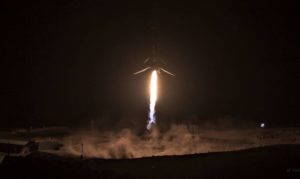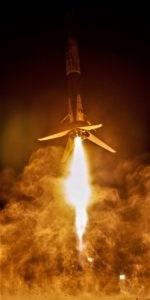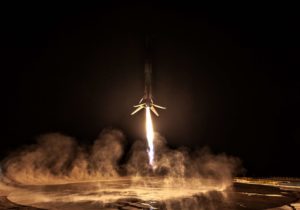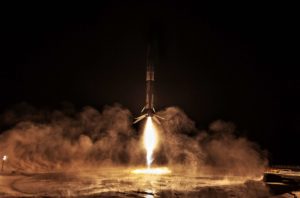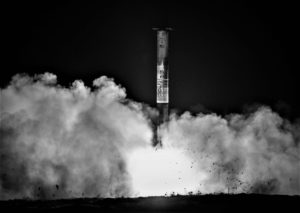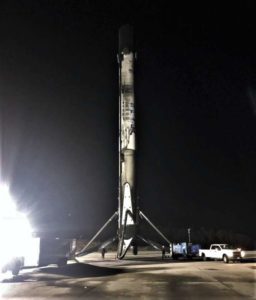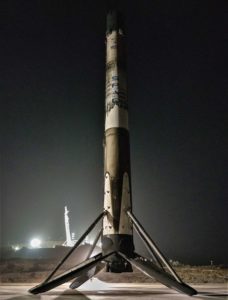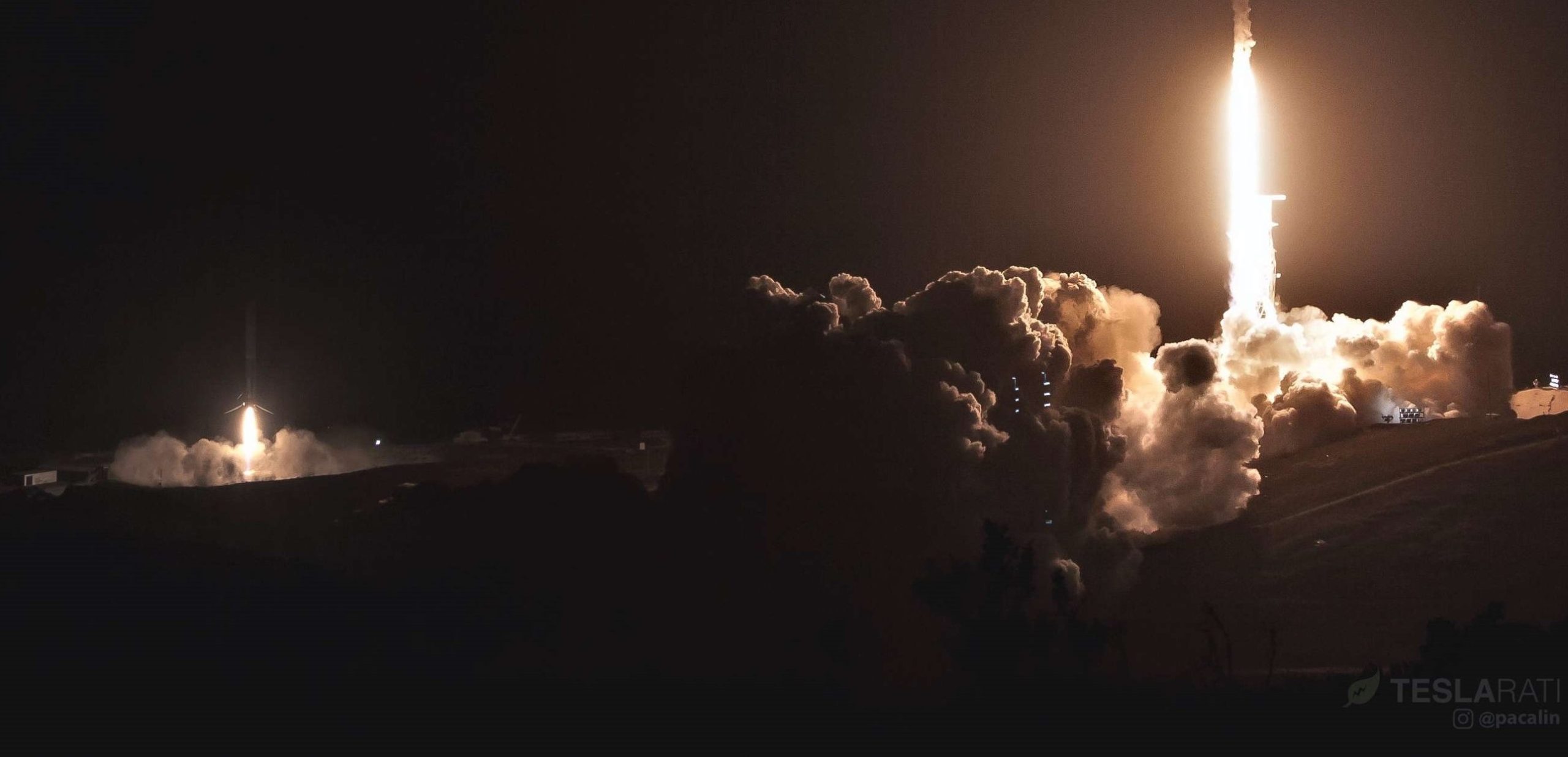
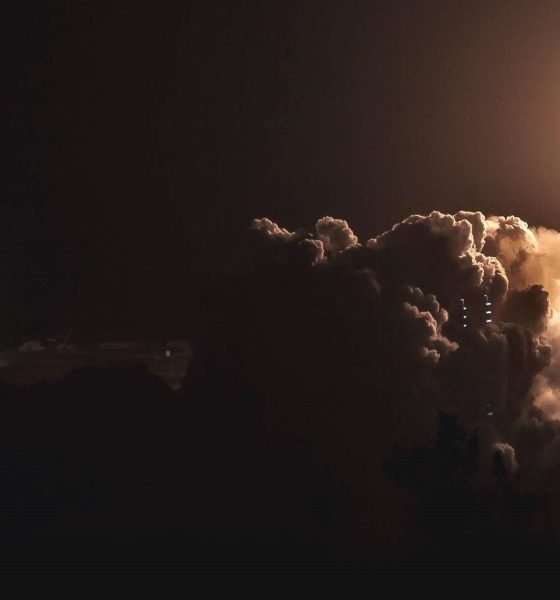
News
SpaceX’s Falcon 9 returns to Earth in first on-site media photos of rocket recovery
Thanks to the introduction of a brand new rocket landing pad (LZ-4) less than half a kilometer (~0.3 miles) from SpaceX’s SLC-4 Vandenberg launch complex, members of the media attending the launch were given the first opportunity ever to capture a Falcon booster recovery with remote cameras.
Battling the possibility that SpaceX might forbid landing photos entirely or that Vandenberg’s infamous fog banks would forbid them in a different sense, cautious optimism was ultimately warranted, and picture-perfect weather lead to both an extraordinary light show over much of California and the successful capture of the first unofficial remote images of a Falcon 9 landing.
SpaceX landed a booster at Vandenberg for the first time, in case you hadn’t heard! Here are a few frames from one of my remote cameras aimed at the landing zone (LZ-4).#spaceX #SAOCOM1A @Teslarati pic.twitter.com/w2FMM5DJRQ
— Pauline Acalin (@w00ki33) October 8, 2018
Following successful separation from Falcon 9’s upper stage and the SAOCOM 1A satellite payload, booster B1048 immediately began a rapid 180-degree flip maneuver, igniting either one or three of its Merlin 1D engines to begin its journey back to the launch site. After cancelling out a velocity of roughly 2 kilometers per second in the wrong direction, B1048 dropped almost straight down from a peak altitude of ~50 km to the landing zone, punctuated by a reentry burn used to protect the rocket from the brunt of atmospheric reentry heating.
A bit less than eight minutes after launch, the first stage broke through the sound barrier, began a single-engine landing burn, deployed its landing legs, and came to a gentle rest at Landing Zone-4, B1048’s second successful launch and landing. Thanks to the low-energy orbit, relatively small satellite, and Falcon 9 Block 5’s healthy performance margins, B1048 likely experienced the most forgiving recovery conditions since SpaceX began landing and reusing boosters, making the rocket a prime candidate to be the first SpaceX Falcon 9 booster to fly three times.
- Falcon 9 B1048’s SLC-4E launch and LZ-4 launch in one camera frame. (Pauline Acalin)
- Teslarati’s own Pauline Acalin managed to capture a number of extraordinary photos of launch and landing with her remote cameras. (Pauline Acalin)
- Falcon 9 B1048.2 landed at LZ-4 after its second successful launch. (SpaceX)
- (SpaceX)
- It’s second landing marked the debut of SpaceX’s LZ-4 landing zone. B1048 may be a prime candidate for SpaceX’s first triple booster reuse. (SpaceX)
- (SpaceX)
- (SpaceX)
- Falcon 9 B1048 landed at LZ-4 after its second launch and is now being refurbished on the opposite coast. (SpaceX)
Even more so, the fact that B1048 landed barely ~2000 feet from SpaceX’s SLC-4 hangar – where it will be inspected and refurbished – will be a boon for rapid and affordable reusability, thanks to the fact that SpaceX does not have to operate any complex ships, shut down public roads, or transport the recovered rocket more than a few thousand feet. SpaceX confirmed as much during its SAOCOM 1A webcast.
Not yet officially on the schedule, SpaceX’s next Vandenberg launch is expected to be Spaceflight Industries’ SSO-A rideshare mission, carrying around 70 individual satellites of varying masses. Chronically delayed by the complexity of wrangling 70 different spacecraft into a single fairing and – more recently – minor issues with rocket availability, several of SSO-A’s passengers have provided a tentative launch date of November 19th, 2018. If SpaceX is planning to reuse B1048 a third time with SSO-A, that will demand a record-breaking turnaround for the booster, as few as 42 days between landing #2 and launch #3.
For prompt updates, on-the-ground perspectives, and unique glimpses of SpaceX’s rocket recovery fleet check out our brand new LaunchPad and LandingZone newsletters!

News
Tesla adds new surprising fee to Robotaxi program
“Additional cleaning was required for the vehicle after your trip. A fee has been added to your final cost to cover this service. Please contact us if you have any questions.”

Tesla has added a new and somewhat surprising fee to the Robotaxi program. It’s only surprising because it was never there before.
Tesla shocked everyone when it launched its Robotaxi platform and offered riders the opportunity to tip, only to tell them they do not accept tips. It was one of the company’s attempts at being humorous as it rolled out its driverless platform to people in Austin.
As it has expanded to new cities and been opened to more people, as it was yesterday to iOS users, Tesla has had to tweak some of the minor details of the Robotaxi and ride-hailing platforms it operates.
First Look at Tesla’s Robotaxi App: features, design, and more
With more riders, more vehicles, and more operational jurisdictions, the company has to adjust as things become busier.
Now, it is adjusting the platform by adding “Cleaning Fees” to the Robotaxi platform, but it seems it is only charged if the vehicle requires some additional attention after your ride.
The app will communicate with the rider with the following message (via Not a Tesla App):
“Additional cleaning was required for the vehicle after your trip. A fee has been added to your final cost to cover this service. Please contact us if you have any questions.”
The cost of the cleaning will likely depend on how severe the mess is. If you spill a soda, it will likely cost less than if you lose your lunch in the back of the car because you had a few too many drinks.
This is an expected change, and it seems to be one that is needed, especially considering Tesla is operating a small-scale ride-hailing service at the current time. As it expands to more states and cities and eventually is available everywhere, there will be more situations that will arise.
The messes in vehicles are not a new situation, especially in a rideshare setting. It will be interesting to see if Tesla will enable other fees, like ones for riders who request a ride and do not show up for it.
News
Tesla Model Y sold out in China for 2025
Customers who wish to get their cars by the end of the year would likely need to get an inventory unit.

It appears that the Model Y has been sold out for 2025 in China. This seems to be true for the four variants of the vehicle that are currently offered in the country.
Tesla China’s order page update
A look at Tesla China’s order page for the Model Y shows a message informing customers that those who wish to guarantee delivery by the end of the year should purchase an inventory unit. This was despite the Model Y RWD and Model Y L showing an estimated delivery timeline of 4-8 weeks, and the Model Y Long Range RWD and Model Y Long Range AWD showing 4-13 weeks.
As per industry watchers, these updates on the Model Y’s order page suggest that Tesla China’s sales capacity for the remainder of 2025 has been sold out. The fact that estimated delivery timeframes for the Model Y Long Range RWD and AWD extend up to 13 weeks also bodes well for demand for the vehicle, especially given strong rivals like the Xiaomi YU7, which undercuts the Model Y in price.
Tesla China’s upcoming big updates
What is quite interesting is that Tesla China is still competing in the country with one hand partly tied behind its back. So far, Tesla has only been able to secure partial approval for its flagship self-driving software, FSD, in China. This has resulted in V14 not being rolled out to the country yet. Despite this, Tesla China’s “Autopilot automatic assisted driving on urban roads,” as the system is called locally, has earned positive reviews from users.
As per Elon Musk during the 2025 Annual Shareholder Meeting, however, Tesla is expecting to secure full approval for FSD in China in early 2026. “We have partial approval in China, and we hopefully will have full approval in China around February or March or so. That’s what they’ve told us,” Musk said.
News
Tesla Full Self-Driving appears to be heading to Europe soon
For years, Musk has said the process for gaining approval in Europe would take significantly more time than it does in the United States. Back in 2019, he predicted it would take six to twelve months to gain approval for Europe, but it has taken much longer.

Tesla Full Self-Driving appears to be heading to Europe soon, especially as the company has continued to expand its testing phases across the continent.
It appears that the effort is getting even bigger, as the company recently posted a job for a Vehicle Operator in Prague, Czech Republic.
This would be the third country the company is seeking a Vehicle Operator in for the European market, joining Germany and Hungary, which already have job postings in Berlin, Prüm, and Budapest, respectively.
🚨Breaking: Tesla is hiring vehicle operators in Prague. pic.twitter.com/CbiJdQLCLj
— Tesla Yoda (@teslayoda) November 19, 2025
This position specifically targets the Engineering and Information Technology departments at Tesla, and not the Robotics and Artificial Intelligence job category that relates to Robotaxi job postings.
Although there has been a posting for Robotaxi Operators in the Eastern Hemisphere, more specifically, Israel, this specific posting has to do with data collection, likely to bolster the company’s position in Europe with FSD.
The job description says:
“We are seeking a highly motivated employee to strengthen our team responsible for vehicle data collection. The Driver/Vehicle Operator position is tasked with capturing high-quality data that contributes to improving our vehicles’ performance. This role requires self-initiative, flexibility, attention to detail, and the ability to work in a dynamic environment.”
It also notes the job is for a fixed term of one year.
The position requires operation of a vehicle for data collection within a defined area, and requires the Vehicle Operator to provide feedback to improve data collection processes, analyze and report collected data, and create daily driving reports.
The posting also solidifies the company’s intention to bring its Full Self-Driving platform to Europe in the coming months, something it has worked tirelessly to achieve as it spars with local regulators.
For years, Musk has said the process for gaining approval in Europe would take significantly more time than it does in the United States. Back in 2019, he predicted it would take six to twelve months to gain approval for Europe, but it has taken much longer.
This year, Musk went on to say that the process of getting FSD to move forward has been “very frustrating,” and said it “hurts the safety of the people of Europe.”
Elon Musk clarifies the holdup with Tesla Full Self-Driving launch in Europe
The latest update Musk gave us was in July, when he said that Tesla was awaiting regulatory approval.

